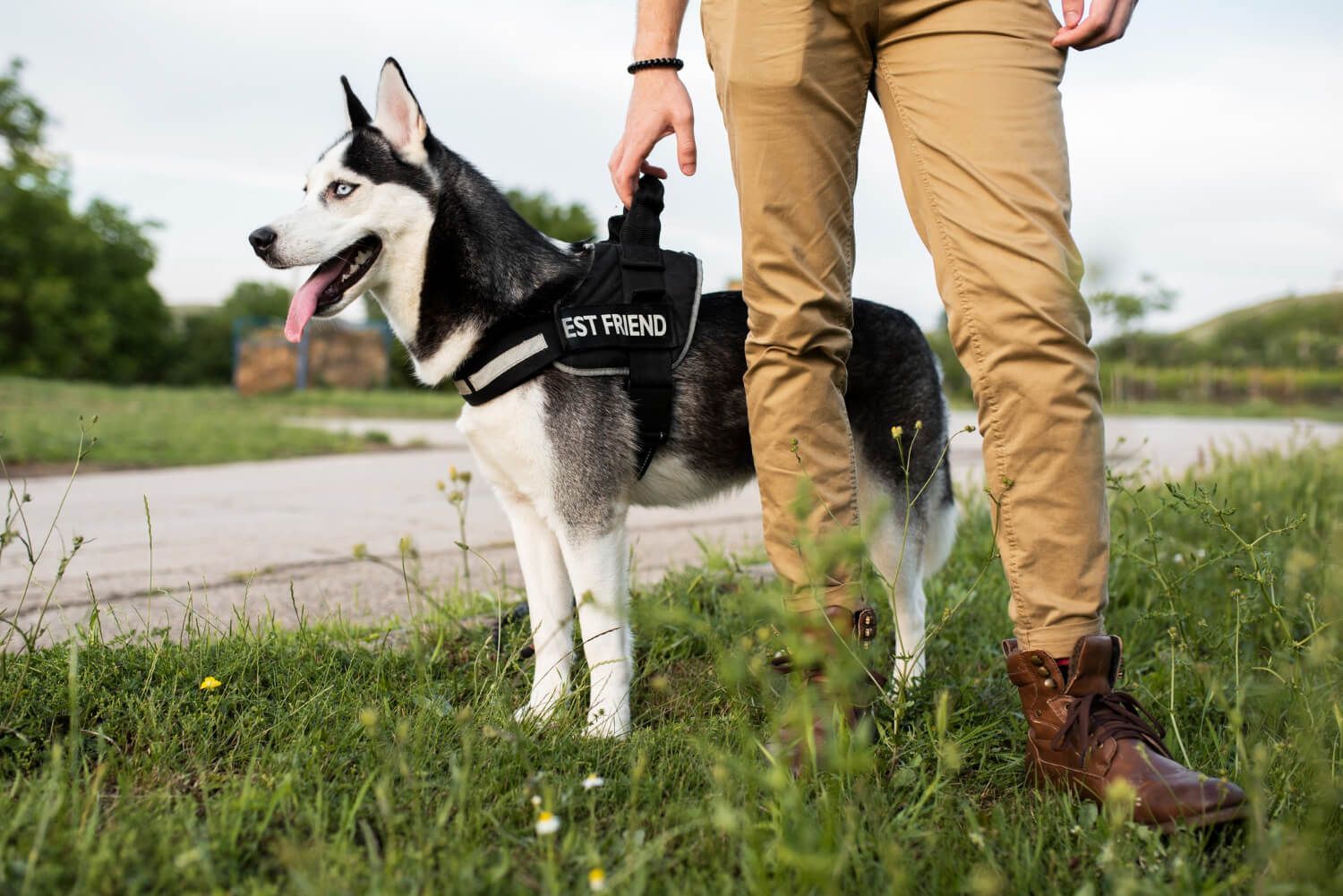Canine Inspection in Colombia: A Key Practice for Cargo Security
Canine inspection in Colombia is a fundamental practice for ensuring the security of cargo transportation. This system uses trained dogs to detect illegal and dangerous substances at ports, airports, and control checkpoints. Over the years, canine inspection has evolved and strengthened with a legal framework that supports its implementation. Its importance lies in protecting the public and combating drug trafficking and other criminal activities.
Foundations of Canine Inspection in Colombia
Canine inspection is an essential component of national security and cargo control in Colombia. Below are its various aspects and relevance in the fight against organized crime.
History and Evolution of Canine Inspection
The use of dogs to detect illegal substances dates back several decades. Initially, this technique was adopted to tackle drug trafficking in the region. Over time, the practice matured and became part of customs and security operations in the country. A more structured system has since emerged to allow for specialized training of canines.
Legal Framework and Current Regulations
In Colombia, canine inspection is regulated by the Superintendency of Surveillance and Private Security. This entity establishes the rules governing the use of dogs at customs and control points, ensuring that safe and effective protocols are followed. Related laws include provisions for personnel training and the handling of canines in security operations.
The Importance of Canine Inspection for National Security
The presence of dog teams at customs checkpoints is key in the fight against drug trafficking and human smuggling. Their ability to detect odors in minimal concentrations gives them a significant advantage over other inspection methods. This allows for early intervention, contributing to effective risk management and public protection.
- Efficient detection of prohibited substances
- Quick response to potential threats
- Increased trust in the customs control system
As a result, canine inspection not only strengthens national security but also fosters a more trustworthy commercial environment. Its implementation is therefore a fundamental element of the country’s control and surveillance strategies.
How the Canine Inspection System Works
This system is essential for effectively detecting illegal and hazardous substances in Colombia. Through a combination of rigorous training, advanced techniques, and constant supervision, dogs and their handlers are ensured to operate efficiently.
How Are Dogs Trained for Inspection?
Canine training is a meticulous and lengthy process. Dogs are selected for their keen sense of smell and then subjected to training sessions that include:
- Desensitization to various environments and situations
- Socialization with people and other animals
- Familiarization with different substances and odors
- Training to respond to specific commands in real working conditions
The goal is to form an efficient team between the dog and its handler, allowing for smoother operations during inspections.
Detection Methods and Techniques
The techniques used in canine inspection vary depending on the operational context. Common methods include:
- Using basic commands to guide the dog to specific areas
- Odor detection in shipments via olfactory sensitivity
- Alert responses indicating the presence of illicit substances
These strategies allow dogs to identify not only drugs, but also weapons and other prohibited items in various scenarios.
Monitoring and Quality Control Processes
The effectiveness of the canine inspection system also depends on constant monitoring and quality control of operations, which includes:
- Regular audits to assess dog and handler performance
- Evaluations of work teams to ensure optimal conditions
- Ongoing training to update techniques and procedures
This oversight is vital to maintaining high standards in the fight against illegal product trafficking.
Applications of Canine Inspection at Ports and Airports
The use of trained canines has proven invaluable in detecting illegal substances and ensuring greater security at critical points like ports and airports in Colombia.
Procedures at Ports and Import Points
At ports, detector dogs work in coordination with customs authorities. These animals patrol cargo areas and containers, where they can identify specific odors that may signal the presence of drugs, weapons, or prohibited items. Procedures include:
- Random container inspections
- Warehouse area checks
- Collaboration with other security teams for increased effectiveness
Inspections at Airports and Border Crossings
Canine inspection is also essential at airports, where dogs play a critical role in detecting narcotics and banned items in luggage and passenger areas. At border crossings, dogs help prevent illegal goods from entering through:
- Passenger and luggage screening lines
- Collaboration with police and immigration units
- Inspections of cargo transport vehicles
Success Stories and Recent Statistics
Numerous successful cases highlight the effectiveness of canine inspection. In 2022, over 500 kilograms of cocaine were seized at the port of Cartagena thanks to the work of these dogs. Joint operations have also led to the confiscation of weapons and ammunition, demonstrating the dogs’ ability to safeguard national security.
Statistics show the increasing effectiveness of using canines in detecting crimes related to drug trafficking. The implementation of modern strategies and continuous training for dogs continue to enhance the inspection efforts in Colombia.

Requirements and Procedures for Cargo Transportation
Meeting the necessary requirements and procedures for cargo transportation is essential within the context of canine inspection, as it ensures that all processes are carried out appropriately and legally.
Necessary Documentation for Import and Export Processes
Proper documentation is crucial for managing cargo transportation. It not only minimizes risks during inspection but also facilitates customs clearance.
Import Requirements
To import goods, certain documents must be presented to validate the legality of the products. These include:
- Original commercial invoice
- Import permit
- Customs declaration
- Tariff classification item
Documentation for Livestock Exports
Exports of livestock-related products must also comply with specific regulations. Required documentation includes:
- Health certificate
- Export permit issued by the ICA (Colombian Agricultural Institute)
- Commercial invoices containing seller and buyer information
Security Measures and Proper Packaging
How goods are packaged is just as important as the documentation provided. Proper packaging helps prevent issues during inspection.
Tips for Ensuring Regulatory Compliance
It is essential that goods meet customs regulations. Useful tips include:
- Use strong, sealed packaging materials
- Properly label each package with the relevant information
- Conduct pre-shipment inspections to verify product condition
Methods to Prevent Cargo Contamination
To avoid negative outcomes during canine inspection, the following methods can be implemented:
- Properly clean containers before use
- Store products in conditions that prevent cross-contamination
- Avoid transporting prohibited or hazardous goods together
Challenges and the Future of Canine Inspection in Colombia
Today, canine inspection faces several challenges and opportunities to improve its effectiveness in the fight against drug trafficking and other crimes. As technology evolves, so do the techniques used in inspection procedures.
Technological Innovations in Canine Inspection
The implementation of new technology is revolutionizing inspection procedures. Tools such as advanced detection devices and data analysis software are being incorporated to optimize processes.
Integrating Technology into Current Methods
Innovations aim to complement the work of detection dogs. For example, the use of scanners capable of detecting specific odors is increasingly common at airports and ports. This helps streamline inspections and increase accuracy in detecting hazardous substances.
Expansion of Training and Education Programs
To ensure proper performance, it is necessary to strengthen the training of both dogs and their handlers. Ongoing education is crucial and must include updated and diversified techniques.
Current Challenges and Future Goals of the Surveillance System
Challenges range from adapting to new trafficker tactics to maintaining quality standards in operations. The future of the surveillance and control system includes:
- Strengthening international cooperation
- Developing more efficient protocols
- Implementing more rigorous audit procedures in inspections
- Increasing public awareness and visibility of canine inspection efforts
Addressing these challenges will determine the security of cargo transportation and the effectiveness of Colombia’s canine inspection system.







